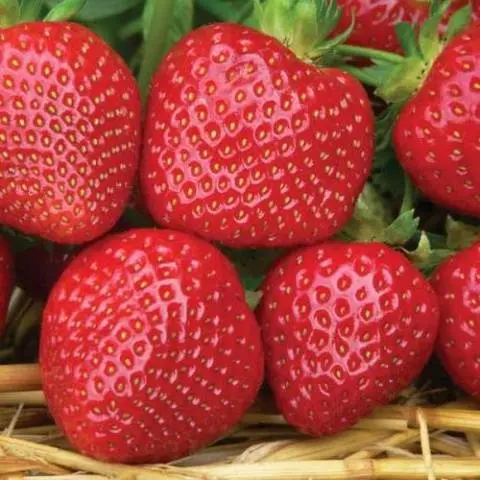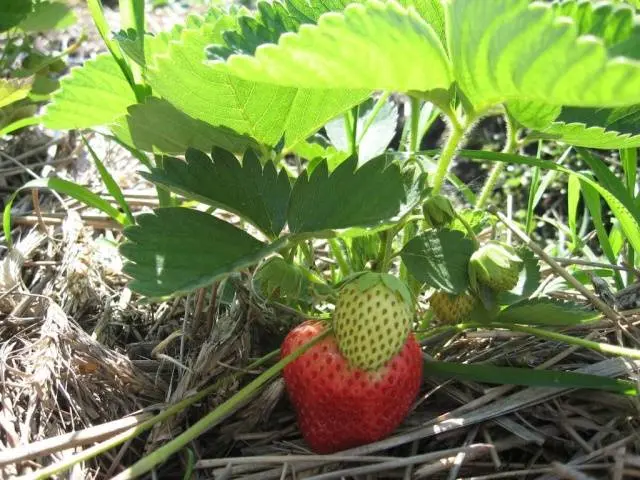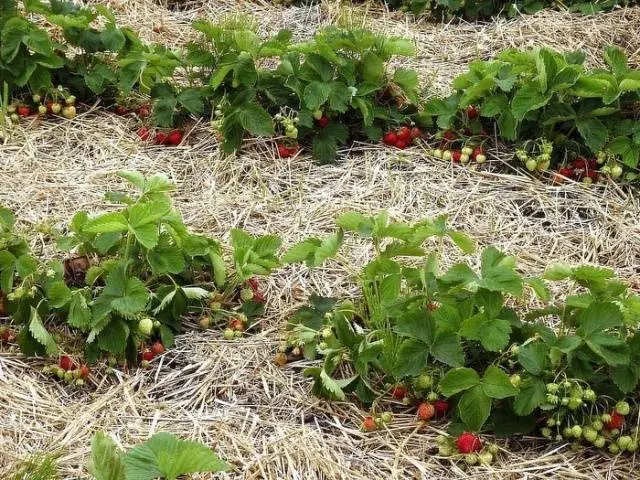Every summer resident dreams of extending the strawberry consumption season. This tasty and healthy berry is always on the table, and good in preparations. Not so long ago, a variety appeared in Germany that is ready to fulfill this dream. We are talking about the strawberry variety Malvina. Created in 2010 by German breeder Peter Stoppel, this berry rounds out the strawberry season of single-bearing strawberries, and finishes it with brilliance, as Malvina strawberries are surprisingly good not only in appearance, but also in taste.
The reviews of summer residents about her are only enthusiastic, and to find out more about her, let’s look at her photo and read the description of the Malvina strawberry variety.
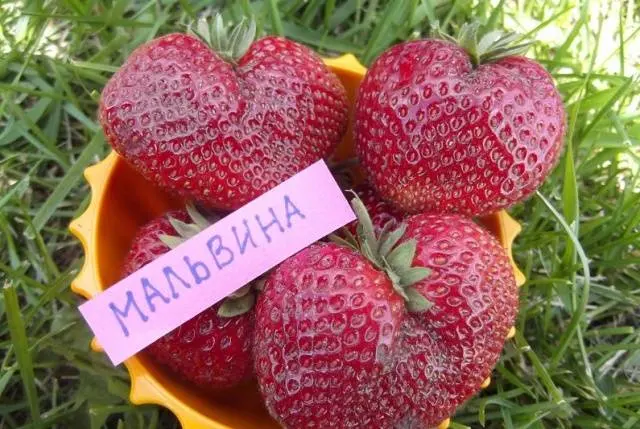
Features of the variety
- Ripens very late. Depending on the growing region, fruiting can begin from late June to mid-July.
- The fruiting period is extended and can be from 2 to 3 weeks, depending on the weather. In hot and sunny summers, delicious berries ripen faster.
- The shape of the berries is very beautiful, slightly reminiscent of a heart, and the color is special. At the stage of technical maturity, it is no different from other varieties, but when fully ripe it becomes saturated, it has a cherry hue. In a word, you will not confuse this berry with any other.

- The taste of Malvina strawberries is beyond praise. It is quite worthy in technical ripeness, and when fully ripe, the berry becomes sweet and acquires a rich taste. On a nine-point scale, tasters rated it at 6,3 points. The aroma is strongly pronounced, reminiscent of wild strawberries.
- The weight of the berries is rather big. At the first collection can reach 35 grams. The yield is not very high, up to 800 g can be harvested from a bush, but good agricultural technology allows you to raise this figure to 1 kg – this is a good result.
- The berry is dense and juicy at the same time, but does not crumple and does not flow, which is quite rare for strawberries with such a good taste. It is a commercial variety that tolerates transport over long distances well. To prevent spoilage of strawberries of the Malvina variety during transportation, pick berries at the stage of technical ripeness.
- In strawberries of the Malvina variety, a small amount of berries – about 3% – can produce small leaves. This is not a disease, but a genetic feature that is quite rare.
- The plant itself can be given the following characteristics: very powerful, with well-developed leaves and a large number of horns. It is pleasant to admire such bushes – with a height of 50 cm, they can have a diameter of 60 cm.

- The peduncles of this variety are located below the leaves, so the berries are securely hidden from the sun and do not bake in the heat. The flowers are quite large, bisexual, therefore, this strawberry does not need a pollinator, the only one of all late varieties. So that the berries do not get dirty and do not hurt the ground under the bushes, you need to mulch with straw, and preferably with pine needles.

- Malvina has good resistance to diseases and pests. But from thrips and weevil it is better to process it. It can get sick with verticillium and fusarium wilt, so preventive treatments for diseases caused by fungal microorganisms are required. Choose the right predecessors for Malvina strawberries and weed the beds in time – this reduces the risk of disease.
- This variety has medium frost resistance. In regions with cold and little snowy winters, the plantation will have to be covered with straw or spruce branches for the winter.
If there is little snow, rake it from other beds.
Like most varieties of strawberries, this variety has its own characteristics in the care and planting.
Landing
Such powerful bushes require a considerable area of nutrition for their development and fruiting. Therefore, the landing pattern will differ from the generally accepted one. Between plants you need to leave at least 60 cm, and a row from a row should be at a distance of 70 cm. Of course, such bushes take up a lot of space, but the variety is worth it.
Planting dates will also differ from other varieties familiar to strawberries. For Malvina, spring planting is preferable. In the first year, the harvest will not be plentiful, but by the second year, having grown up to 8 horns over the summer, strawberries will endow with a large number of large and beautiful berries. Due to the peculiarities of fruiting, autumn planting is postponed to the end of August – the time when the next year’s harvest is laid for strawberries. Early frosts can prevent young strawberry seedlings from fully rooting, which is fraught with freezing of autumn plantings in winter.
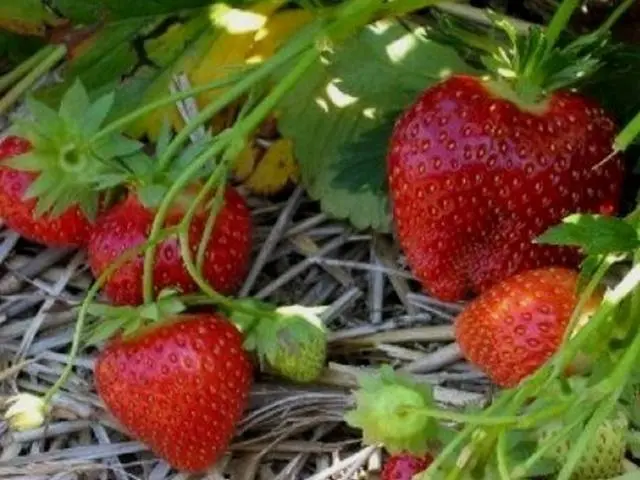
Powerful Malvina plants take out a lot of nitrogen from the soil.
Care
Proper care is an important component of obtaining a full harvest.
Feeding
This strawberry does not tolerate a lack of nitrogen. To compensate for it, foliar top dressing can be done in season 2 with a solution of nitrogen fertilizer, for example, ammonium nitrate with a concentration 2 times less than for root top dressing. They should be carried out during the period of leaf growth and the extension of peduncles.
In the first case, the leaves can get burned, and in the second case, the fertilizer simply does not have time to be absorbed.
For strawberries of the Malvina variety, organic top dressing with the addition of ash and superphosphate is preferable. Nitrogen from organics is released gradually. This allows you to maintain its sufficient concentration for a long time.
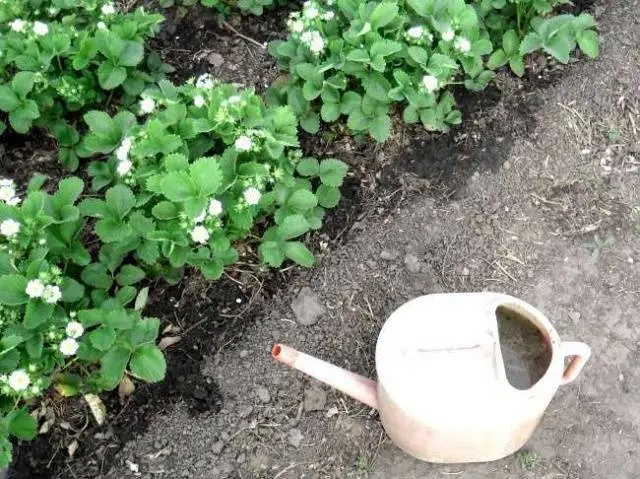
No less than nitrogen strawberries need potassium. You can feed it with a potassium fertilizer that does not contain chlorine, such as potassium sulfate. This top dressing is carried out at the beginning of the growing season. An alternative option is top dressing with ash in dry form or in the form of a solution. Ash contains, in addition to potassium, many trace elements necessary for plants to grow successfully. Advice! The beds after dry top dressing need to be loosened and watered.
Watering
Malvina needs moisture more than other varieties for good development and obtaining a full-bodied crop. With its lack of berries may have a bitter taste. Therefore, watering, especially during the dry period, is mandatory for her.
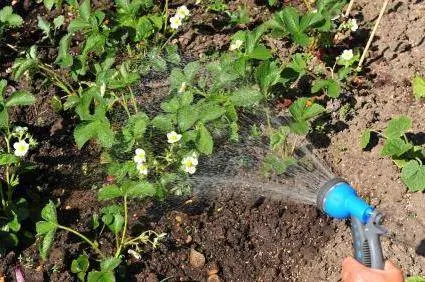
The dark color of the material can lead to drying out of the root system, which is undesirable for Malvina.
All features of the variety are shown in the video:
Conclusion
Late-ripening strawberries of the Malvina variety will extend the season for consuming this healthy berry. Thanks to its excellent taste, it will become the most favorite variety in the strawberry plantation.










